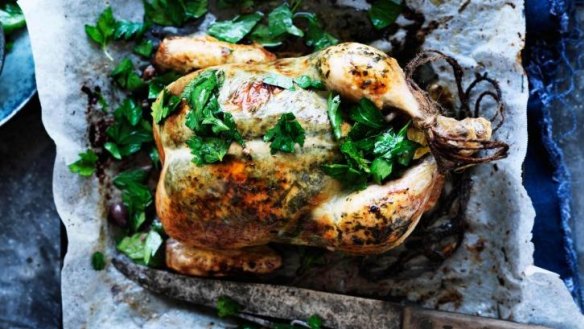Should you rest meat before cooking, as well as after?

I was told to rest meat before cooking as well as after cooking. L. Kirk
All meat, even sausages, need a little resting after cooking to allow the muscle fibres to absorb the juices they released during cooking. Leaving meat to come to room temperature prior to cooking allows the meat to cook evenly. If you grill a really cold steak compared to one that is has been left on the bench for 20 minutes (covered hygienically, of course) the cold steak will be well done on the outside while possibly very rare or even raw in the middle.
Can you freeze cheese? C. Arthurs
Let's put it this way. You could repaint a Mercedes using a paint roller but it is going to diminish the aesthetics of the vehicle. Do it to an old Skoda and it could, possibly, increase its resale value. Freezing cheese, however, is never going to improve it. If you suddenly find yourself with a surplus of cheese – you may have won some in a raffle or know a crafty storeman in a cheese factory – you could freeze it, but there are consequences. When the water in the cheese freezes it forms ice crystals that break apart the curd. This means that softer cheeses lose their structural integrity and become less palatable. Harder cheeses have less water and don't suffer the same damage. Open cheeses, such as blue cheese, survive the process quite well. Tightly cover cheeses in plastic wrap to avoid freezer burn and freeze for up to six months. Defrost in the fridge. Defrosted cheese is best suited to cooking with and making cheese and tomato toasties.
Please tell me how to make a clafoutis properly. Many attempts have so far yielded a less than impressive result! J.Collins
Simple. Fly to France and spend time with a housewife who trained to cook at her grandmother's side. To the uninitiated clafoutis is a batter baked pudding dotted with fruit, traditionally cherries. I learned to make it from Melbourne baker Phillippa Grogan. Turn the oven to 220C. Break six eggs with 65 grams of sugar and a pinch of salt in bowl. Mix. Add 65 grams of plain flour and very gently mix to a smooth paste. You don't want to work the gluten. This will make the pudding tough. Gently mix in 125 millilitres of milk, 45 millilitres of kirsch and a teaspoon of vanilla essence to make a smooth batter.
Liberally butter a shallow 24-centimetre ovenproof pie dish with two tablespoons of butter, evenly spread over 300 grams of cherries (at this time of the year, drained, bottled, sour cherries can be used). Sprinkle with two tablespoons of castor sugar and place the dish in the preheated hot oven for 10 minutes to start the fruit cooking and preheat the dish and butter for the batter. (If you make Yorkshire pudding you know that preheating the pan makes the pudding puff up). Stir the batter before you pour it over the fruit, as the flour may have settled. Carefully pour it over the fruit, sprinkle with sugar and return to oven to bake for 15-20 minutes, when the edges of the clafouti are puffed up. Serve hot with pure cream.
brainfood@richardcornish.com.au
Twitter and Insta @Foodcornish
The best recipes from Australia's leading chefs straight to your inbox.
Sign up